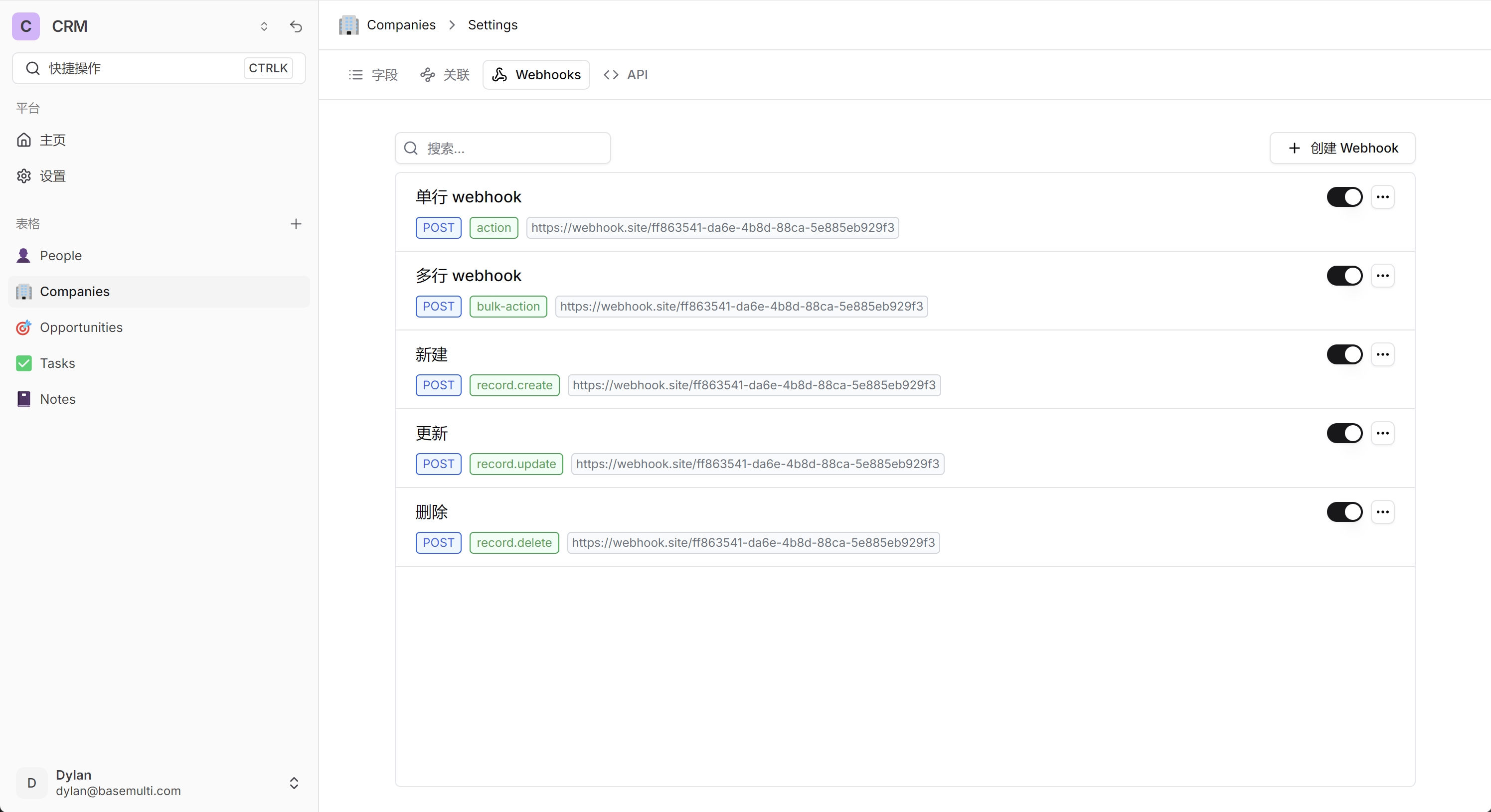Webhook Overview
This document introduces the basic concepts and use cases of Webhooks.
What is a Webhook
A Webhook allows you to receive real-time notifications when data changes. When a configured event occurs, the system sends an HTTP POST request to the URL you specify.

Use Cases
Webhooks can be used for:
- Data Synchronization - Synchronize data in real-time to other systems
- Automation of Workflows - Trigger automated operations in other systems
- Real-time Notifications - Receive real-time alerts for data changes
- Data Backup - Back up critical data in real-time
Supported Events
Record Events
record.create- Triggered when a record is createdrecord.update- Triggered when a record is updatedrecord.delete- Triggered when a record is deletedrecord.action- Manually triggered for single-row record operationsrecord.bulk-action- Manually triggered for batch operations on records
Request Format
Basic Request Structure
json
{
"type": "event type",
"created_at": "time of event occurrence",
"data": {
"base_id": "base ID",
"table_name": "table name",
"records": [
// related record data
]
}
}Best Practices
- Verify the signature of each request
- Respond quickly to webhook requests
- Use asynchronous processing mechanisms
- Implement idempotent processing
- Ensure error handling and logging